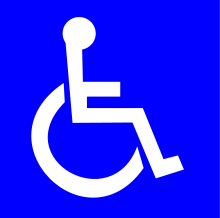Baraka Kanaan had to make the humiliating crawl two times despite assurances in advance from the airline ‘that he would be received and given reasonable accommodation for his disability.’
By Nina Golgowski / NEW YORK DAILY NEWS
Baraka Kanaan, unable to walk, was made to crawl down two Delta airplane aisles and across the tarmacs after the airline failed to provide him with adequate wheelchair accommodations, his lawsuit claims.
A full-time wheelchair user was forced to crawl off two Delta Airlines flights and across the tarmac after the airline twice failed to provide necessary equipment to help him on and off, according to a shocking lawsuit filed in federal court Tuesday.
Baraka Kanaan of Maui, Hawaii, says he had to perform the humiliating crawl to reach his wheelchair two times in July 2012 as Delta employees in Massachusetts and Hawaii helplessly watched "fearful of liability."
The former college professor and current nonprofit head, said the airline had promised adequate wheelchair accommodations but upon time to board and land offered no assistance.
"They gave me an ultimatum. You can find a way off this plane on your own, or you can go back to Maui where you live," he told the Daily News. "And that forced me to crawl, even though I had given them 48 hours' notice and they knew that I was [unable to walk]."
According to his lawsuit, Delta assured him weeks before his flight from the Nantucket Airport "that he would be received and given reasonable accommodation for his disability."
Instead, according to his filing, "in his nicest suit, he crawled hand over hand through the main cabin and down a narrow flight of stairs and across the tarmac to his wheelchair.
RELATED: NURSES CARE FOR YOUNG PATIENT DESPITE CLAIMS THEY ARE OWED THOUSANDS BY PLACEMENT AGENCY
“There were a great number of people watching, and the experience caused Mr. Kanaan great physical and emotional suffering."
Reached by the Daily News for comment Delta refused based on pending litigation.
Kanaan is handicapped and unable to walk after a car accident in 2000 left him with severe spinal injuries. He claims his injuries were further inflamed during his crawl that came just days before he was to undergo a spinal fusion surgery.
Adding insult to injury, he says: "there was an unused lift only a couple hundred feet from where we sat. JetBlue's lift was not being used. It could have easily been used on that plane."
According to the Air Carrier Access Act, Airports and carriers of 31 or more passengers are required to "provide boarding assistance to individuals with disabilities by using ramps, mechanical lifts, or other suitable devices where level-entry boarding by loading bridge or mobile lounge is not available."
After successfully dragging himself off his first flight, Kanaan promptly filed a complaint with Delta.
RELATED: TLC INDICATES SUPPORT FOR HANDICAP ACCESSIBLE FLEET
The airline offered him a $100 voucher for his trouble and assured him it would not happen again with his return trip scheduled for two days later on July 29.
To his complete horror, it did.
Upon his arrival he was informed that they did not have the necessary safety equipment to board him but offered "a piece of cardboard to put down so that his clothes wouldn't get dirty," according to his complaint.
"Thus, Mr. Kanaan was again forced to crawl across the tarmac, up the stairs of the aircraft, down the aisle, and hoist himself into his seat on the aircraft, which was a physically painful experience for Mr. Kanaan. In the process he felt his spine twist and pull in awkward manners."
Delta allegedly then offered him 40,000 SkyMiles after this second horrific flight which, suffice to say, Kanaan refused explaining he’d never want to fly with them again.
"It's not right what they're doing," he said. "For the last year I've been mistreated by Delta, just continuously belittling my situation.
RELATED: DISABLED SURFERS BRAVE THE WAVES IN BRAZIL
"And first they issued a formal apology letter to share with you, just acknowledging every point of their fault. ‘We did this, we did that, we did this, we're sorry, we're very sorry,' and then they came back and said, 'you know it's not our fault. We're not going to do anything about this.'"
In a four-minute video posted to his Facebook page Saturday, Kanaan implored the public to not only boycott Delta, but contact them, the American Civil Liberties Union and their local Disability Rights Center to help end the airline’s "abhorrent" and "shocking” behavior.
“Don't do it for me, do it for the over 5,000 people last year who had complained about Delta mistreatment,” he wrote with his video.
"I just think that there must be something that we can do," he said. Though Kanaan’s allegations are shocking, it is far from the first time Delta has been accused of forcing passengers to crawl off their plane.
In 2008 another Delta passenger performed the same humiliating crawl off two flights, 53-year-old Florida retiree Julianna Dombrowski told Gadling.com.
Dombrowski did not file a legal complaint against the airline telling the news site that though the act was “disgraceful,” she was not sure if Delta or the airports were to blame.
Kanaan is seeking compensatory, treble and punitive damages for violations of the Air Carrier Access Act, the Americans With Disabilities Act, negligence, emotional distress and discrimination.
(Video on facebook)
https://www.facebook.com/photo.php?v=10201680544322019&set=vb.1432074113&type=2&theater

